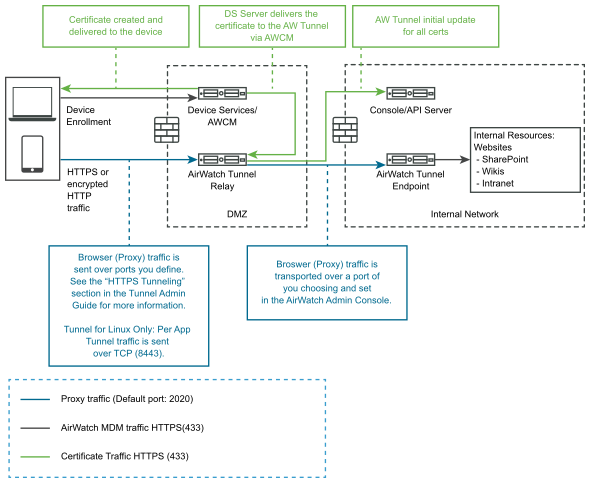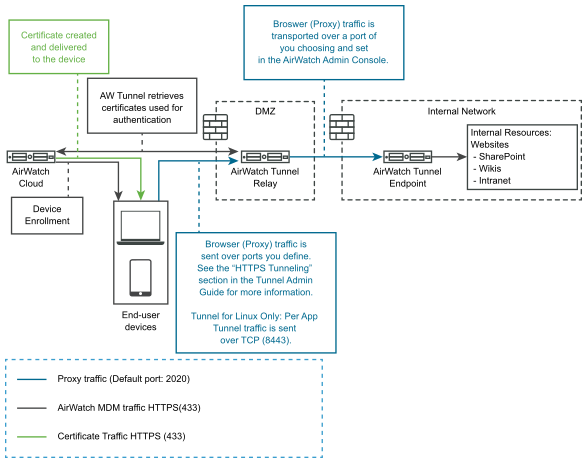If you are using a multi-tier deployment model and the Proxy component of the VMware tunnel, use the relay-endpoint deployment mode. The relay-endpoint deployment mode architecture includes two instances of the VMware Tunnel with separate roles. The VMware Tunnel relay server resides in the DMZ and can be accessed from public DNS over the configured ports.
If you are only using the Per-App Tunnel component, consider using a cascade mode deployment. For more information, see Cascade Mode Deployment.
The ports for accessing the public DNS are by default port 8443 for Per-App Tunnel and port 2020 for proxy. The VMware Tunnel endpoint server is installed in the internal network hosting intranet sites and Web applications. This server must have an internal DNS record that is resolved by the relay server. This deployment model separates the publicly available server from the server that connects directly to internal resources, providing an added layer of security.
The relay server role includes communicating with the API and AWCM components and authenticating devices when requests are made to VMware Tunnel. In this deployment model, communication to API and AWCM from the relay server can be routed to the Outbound Proxy via endpoint server. The Per-App Tunnel service must communicate with API and AWCM directly. When a device makes a request to the VMware Tunnel, the relay server determines if the device is authorized to access the service. Once authenticated, the request is forwarded securely using HTTPS over a single port (the default port is 2010) to the VMware Tunnel endpoint server.
The role of the endpoint server is to connect to the internal DNS or IP requested by the device. The endpoint server does not communicate with the API or AWCM unless Enable API and AWCM outbound calls via proxy is set to Enabled in the VMware Tunnel settings in the Workspace ONE UEM console. The relay server performs health checks at a regular interval to ensure that the endpoint is active and available.
These components can be installed on shared or dedicated servers. Install VMware Tunnel on dedicated Linux servers to ensure that performance is not impacted by other applications running on the same server. For a relay-endpoint deployment, the proxy and Per-App Tunnel components are installed on the same relay server.

